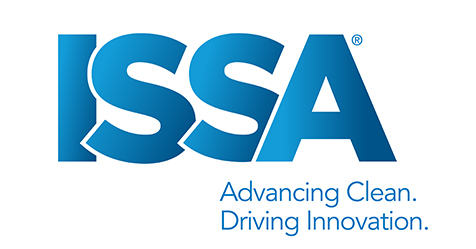Polyester, cotton, polypropylene, rayon, acrylic, nylon, wool, acetate, linen and other types of fibers all combine to make furniture cleaning a potential nightmare to both the experienced and inexperienced alike.
But with some simple testing procedures in place — along with an effective cleaning system — furniture cleaning for your clients is a project that can be both profitable and safe.
Most cleaners get themselves into trouble because they treat furniture cleaning as they do carpet cleaning.
A huge percentage of commercial carpet is a combination of olefin (polypropylene) and nylon, typically at an 88 to 12 percent blend. A large portion of commercial carpet is nylon, while wool takes a single-digit share.
Most furniture fabrics, however, are a blend — but not the type of blend found in carpet. Cotton and polyester is a typical blend, and it’s the cotton component that can cause trouble.
Look at Figure 1 (page 46). This upholstery fabric is 100 percent polyester. It is easy to clean and hard to damage in your cleaning process, despite its “soft” look and feel.
Now, look at Figure 2. This upholstery fabric is a blend of cotton, polyester and acrylic. Not hard to clean, but with more limitations.
Don’t assume that you won’t see delicate fabrics and fibers in commercial buildings. Interior decorators are known for their wicked sense of humor.
That chair in the corner of the president’s office — the one with the red threads running across the seat? Those red threads could be silk. They could be cotton or wool. You just don’t know.
Testing is a must for each piece you will clean.
The fabric in Figure 2 is a potential nightmare, as the darker colors could bleed into the lighter ones, more so since there are natural fibers present. (See “Testing furniture fabrics” on page 47).
Once you know the fiber content in all furniture in your buildings, keep a record of your findings, and you won’t need to test again — until new furniture is purchased.
The contents tag on furniture is not for you. It indicates the filling content of furniture. Ignore it.
If there is a cleaning code on the piece (S for solvent cleaning, W for water cleaning, and X for dry vacuum only), you can use it as a guide, but don’t rely on it — except for the X, in which case you would only dry vacuum unless you are looking for trouble.
Why not rely on furniture cleaning codes? Some tired replacement worker on a Friday night at the furniture plant may have slapped incorrect tags onto a large lot of furniture.
Mistakes can happen.
After the test, get to work
Browning, typically called cellulosic browning, occurs when the lignin in natural plant fibers break apart and wick, or move, to the fiber surface.
Lignin is a natural component found in cellulosic materials, and the less processed a fiber is, the more lignin you may find.
Dye loss or bleeding is more common with natural fabrics. If a fabric has a floral or print design, allow that warning bell in your head to make a difference in your judgment.
Those colors may move only a small fraction of an inch, but that’s all it takes to be called into court and be forced to replace the piece.
To test for colorfastness, apply your strongest cleaning agent onto an inconspicuous spot (such as on the inner skirt on the back of the piece) and clamp a white cotton towel onto the wet area.
If you have no color transfer after 10 minutes, you have — generally — a colorfast piece.
If you have tested your furniture and found natural fibers are present, and/or there might be a colorfastness concern, one option is a low-moisture cleaning system. (See “Low moisture cleaning” on page 48.)
If you have tested your furniture and found that it is synthetic and colorfast, proceed as follows.
The furniture cleaning supply list
These can be padded chairs in a doctor’s office waiting area, theater seats, sofas/love-seats in a reception or executive area, or the chairs found in an office full of cubicles.
Get the following items ready:
- One portable extractor with upholstery cleaning tool
- Two pump-up sprayers
- One trigger sprayer
- Two horsehair brushes
- White cotton towels
- Three percent hydrogen peroxide (or stronger if the furniture is heavily soiled), or sodium percarbonate (a powdered form of peroxide) to mix with warm water in the trigger sprayer
- An upholstery cleaning preconditioner, preferably with solvency to break down oils, mixed according to directions, in one of the pump-up sprayers
- A solvent-based protector, in the second pump-up sprayer
- A neutral or acid rinsing agent, mixed according to directions, to run through your portable machine
- A spot/stain removal kit
Set it all up
Some hindrances will include limited space and hard floors. A drop cloth may be warranted.
Use hot solutions, except for the hydrogen peroxide or sodium percarbonate. If you use too hot of a solution, it will foam up and/or expand too rapidly for the trigger sprayer.
Never enclose any type of heated peroxide or sodium percarbonate in an airtight container — especially if you mix either one of them with ammonia as the catalyst. They off-gas and can create a ticking time-bomb.
To be safe, check with your cleaning chemical distributor for usage. Many cleaning chemical manufacturers produce these chemicals and will have recommendations.
Once the furniture is arranged, set up the portable extractor so that the working upholstery tool can reach at least three pieces at once.
Get the production line moving
There is no need to precondition the backs or sides of the piece, unless there is heavy contamination. The rinse agent in your machine will remove those soils.
Here is where a two-man team is smart. Let’s name the workers, Worker A and Worker B.
After the first piece is preconditioned and agitated, Worker A can begin running the upholstery cleaning tool over the piece, while Worker B can now precondition and agitate the second piece.
Worker A keeps one horsehair brush with him, and uses it to agitate heavily soiled areas as he cleans.
After the first piece is extracted, Worker A moves to the second piece and Worker B rotates back to the first piece for inspection.
If there are any areas that are dirty or dull in appearance and need more cleaning, Worker B can spray the peroxide or percarbonate on these areas and work the chemical into the piece with his horsehair brush.
The oxygen action of this chemical will boost the cleaning on those areas.
There are other chemicals you can use for the second cleaning, when necessary. You have to choose the chemistry you feel is best. Peroxide and sodium percarbonate are two choices.
Then, Worker B moves to the third piece for more preconditioning, while Worker A goes back to the first piece after the second piece is cleaned. Worker A extracts those areas on the first piece that were treated a second time, and then moves to the third piece.
Worker B moves to the second piece for the initial inspection — after the second piece is inspected, if it needs more attention, the peroxide or percarbonate is used, and the procedure continues.
Final touches: Drying, protection, inspection
He inspects for spots and stains, and anything else that needs cleaned again. If there are spots and stains, use the kit according to directions.
Worker B towels off all transition areas and applies the solvent-based protector to the piece. The protector, typically a mineral-spirit carried fluorochemical, will actually dry the piece faster because of the solvent added to it, along with keeping the piece clean longer.
That piece is done.
Important: Keep the production line moving. The key is to never stop the action. Time is money.
Always make sure that Worker B does a thorough inspection — at least twice.
If Worker B has nothing to do physically — a lull of activity — he should spend his time inspecting previous work and toweling off wet areas. He’s also the one to keep the machine full of hot solution and to remove wastewater.
This system works great with two-man teams and multiple pieces. If you only have a few pieces, one person can easily handle this type of production line.
If you are cleaning huge amounts of furniture, such as in a theater, more workers and more equipment are needed. But the most expensive piece of equipment, the extractor, can keep up to four men busy if you run the production line correctly.



